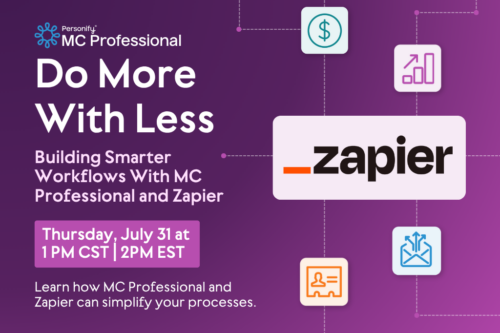As a member organization, your online payment services are part of what helps your organization run smoothly and how it builds success. Both a payment processor and a payment gateway are an essential part of how your organization provides frictionless financial transactions. And when your organization provides payment options that are easy, secure, and convenient, it builds trust with your members, donors, and sponsors and encourages them to give ongoing support. All of this translates to more revenue, time, and energy to invest in the important aspects of your organization.
Whether you’re choosing a payment gateway or a payment processor, wondering what they are, or how they help your organization, you’re in the right place. We’ll cover these details, plus how to migrate from a payment gateway or payment processor. It isn’t as complicated or difficult as you think!
Read on to learn more about:
- Who is involved in online payments?
- What are payment processors?
- How do payment processors work?
- Top 5 payment processors
- What are payment gateways?
- How does a payment processor work?
- Top-ranked list of payment gateways
- What’s the difference between a payment processor vs gateway vs payments service provider (PSP)?
- Why are payment processors and payment gateways necessary?
- How do payment processors and payment gateways help with your organization’s fees and recurring payments?
- How to migrate between payment processors and payment gateways
- Advantages of an all-in-one software solution
Who is involved in online payments?
In any online payment system, there are four parties involved. This is often referred to as the Four Party Scheme:
- The Cardholder/Consumer – The owner of the credit or debit card. The cardholder/consumer can also be referred to as the payer.
- The Merchant – The member organization or the payee.
- The Banks (2) – There are two banks in any online payment system. The first is the acquiring bank (the payee’s bank) and second is the issuing bank (the payer’s bank).
- Payment network or payment system – Networks that help facilitate and support all the financial transactions.
What are payment processors?
Payment processors are a service that manages online payment transactions for your member organization. They mediate money coming from customers to the banks involved (the payee’s and the payer’s) and facilitate the communication necessary for the payment to occur.
Payment processors are a crucial part of online payments. They’re responsible for:
- Making sure the merchant or member organization gets paid
- Authorizing transactions
- Adding security and protecting sensitive information
- Keeping your organization’s PCI compliant
- Note: PCI compliance is adherence to standards and policies that protect financial transactions and prevent the misuse of personal information, and have been put in place by the Payment Card Industry Security Council.
How do payment processors work?
- The payer gives information via their credit or debit card.
- The payment gateway receives the information and sends it to the payment processor.
- Debit card: The payment processor sends the information to the bank to authorize the payment.
- Credit card: The payment processor sends the information to the card network, like Visa or Mastercard, to authorize the payment.
- The funds are then transferred from the payer to the payee, either right away or after a period of time (usually 2-3 business days).
Top payment processors
Looking for payment processor examples? Here are the some leading companies:
- Payroc – Best people-first payment processor
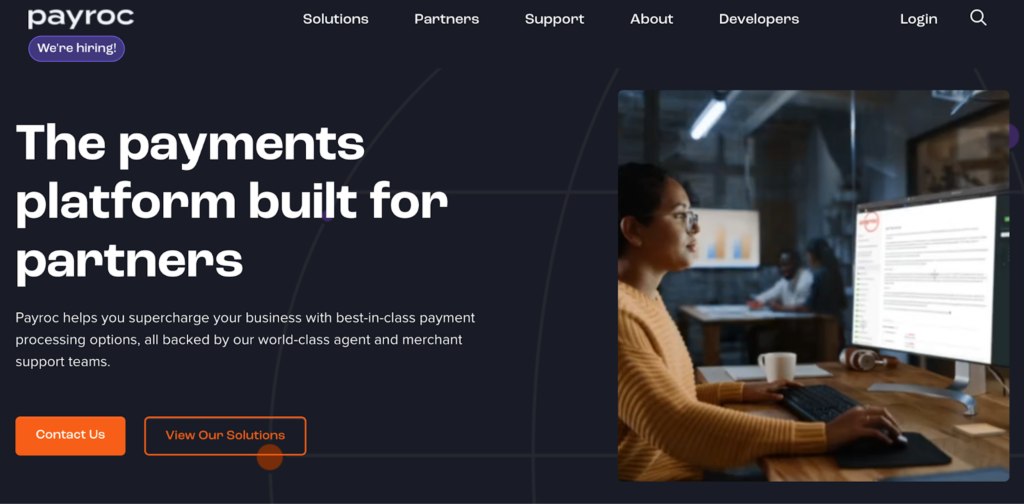
Payroc is a merchant account provider specializing in solutions for payment processing for nonprofits, associations, and other member organizations and businesses of any size and type.
- Paypal – Best for alternative payment
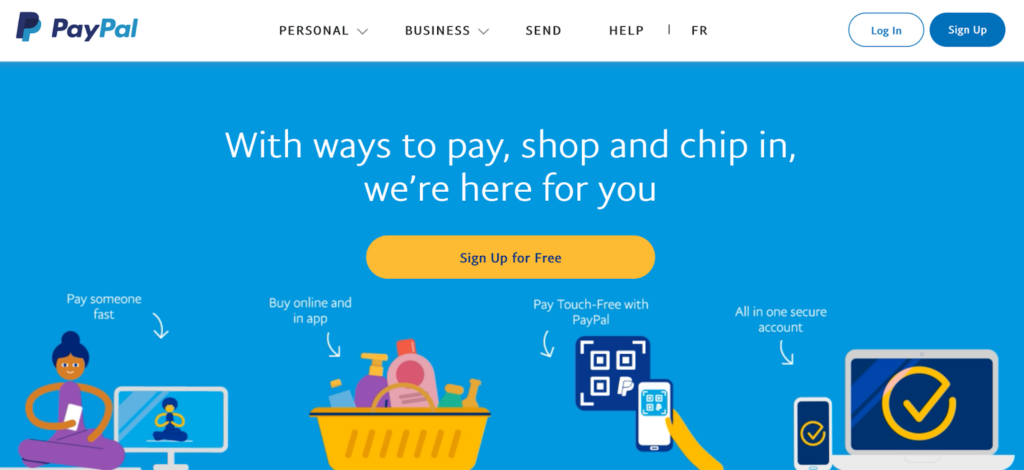
Paypal is a payment platform that operates as a payment processor for organizations and businesses. It enables payment through a secure online account and can also be used as a payment gateway.
- Stripe – Best for online international payment
- Shopify – Best for e-commerce

Shopify is an ecommerce platform for online businesses and retail POS systems. It’s ideal for retailers looking to grow their business.
What are payment gateways?
A payment gateway is a technology, interface or software that transfers information from the payer to payee and then sends it to the payment processor. It’s also responsible for information verification.
There are two main types of payment gateways:
- Payment on-site – Examples include a brick and mortar point of sale or a POS terminal.
- Payment off-site/online – A common example is a check out portal in an online store.
How does a payment gateway work?
- The payer enters their credit card information via a POS terminal or a checkout page.
- The payment gateway receives the information, encrypts it for security, and then authorizes and verifies the information.
- Once the information is verified, it’s captured by the merchant account and bank for the payment to be received. The payment processor then steps in and handles the communication to make the payment happen.
Top-ranked list of payment gateways
Here are some common payment gateway providers:
- Authorize.Net – Best for small-medium member organizations and businesses
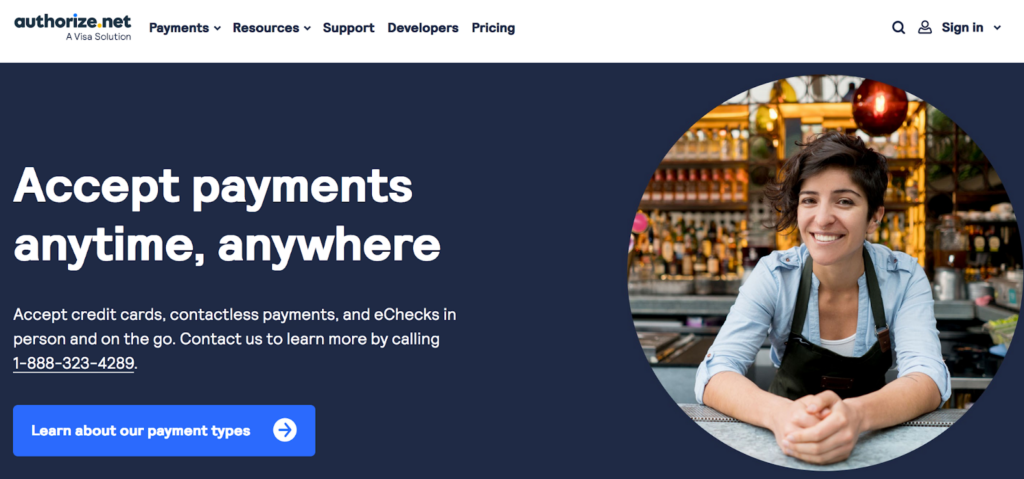
Authorize.Net is a payment gateway that helps small-medium member organizations and businesses accept payments through eCommerce, mobile and phone, and e-check. It also offers billing and POS services.
- NMI – Best for high-risk organizations looking for flexibility and customizability
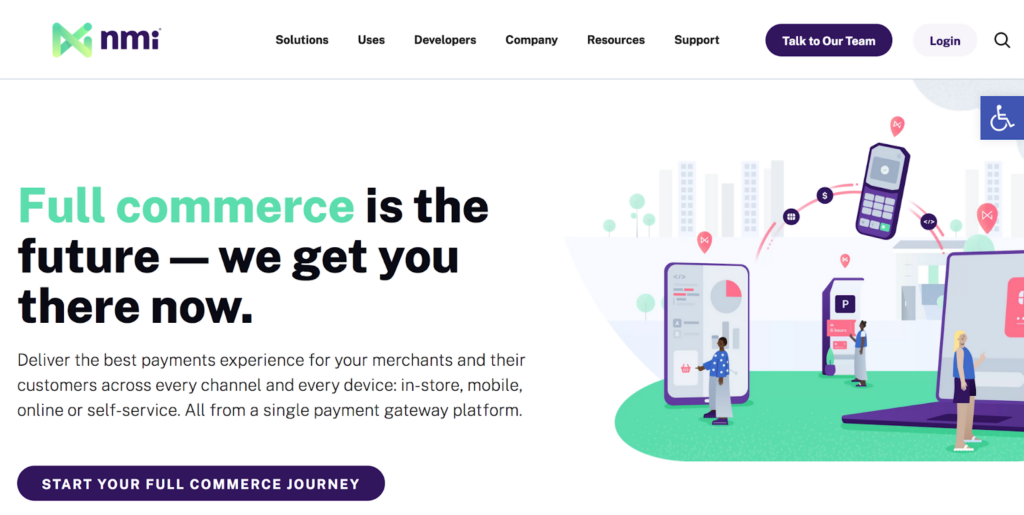
NMI enables high-risk member organizations to securely receive payments with its payment gateway. It acts as a virtual terminal and instantly verifies or denies payments.
- Stripe – Best for worldwide coverage
Both a payment gateway and a payment processor, Stripe allows any business to accept payments from across the globe.
- Paypal (Payments Pro) – Best for both Paypal and credit card payment support
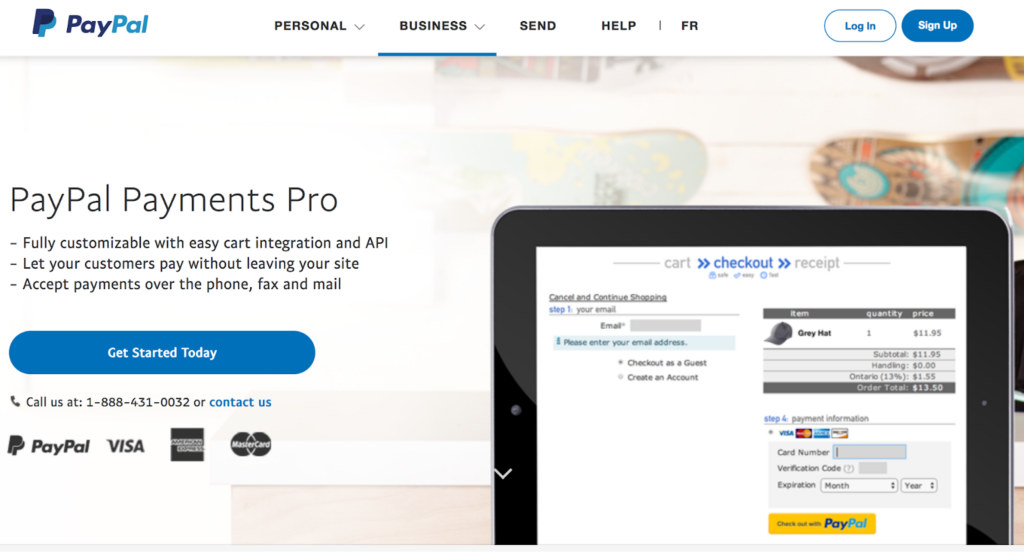
Including both payment gateway and payment processor functions, Paypal Payments Pro allows businesses to process payments within their existing website.
What’s the difference between a payment processor vs gateway vs payment service provider (PSP)?
A payment processor, a payment gateway, and a payment service provider are all part of the same ecosystem of payment services. Here’s an overview of their key differences:
- Payment gateway: A technology, software or interface that receives and authorizes payer information before sending it to the payment processor.
- Payment processor: Responsible for receiving information from the payment gateway and handling communication so money comes into the organization’s or payee’s account.
- Payment service provider: A third-party company that facilitates payment services so an organization or payee can receive money. It can operate a payment gateway, payment processor, or both.
Why are payment processors and payment gateways necessary?
If you’re deciding between a payment gateway vs processor, remember that as a member organization, you need both to securely provide online payment services, as well as transactions through point of sale, mobile, and in-person. If you think your organization will only be accepting in-person payments, then you’ll likely only need a payment processor.
How do payment processors and payment gateways help with your organization’s fees and recurring payments?
When it comes to your organization’s fees and recurring payments, a payment processor and a payment gateway can play a big role. They can benefit your organization by:
- Allowing you to accept payment through online forms
- Handling payments that come to your organization such as:
- Donations
- Merch sales
- In-person and virtual event tickets
- Recurring payments like:
- Membership fees
- Membership dues
- Donations (specifically if a donor signs up for recurring donations)
- Meeting member, donor, and sponsor expectations for online payment options
- Facilitating quicker transaction processes by adding ease and automation
- Gaining more time through payment automation, so you can invest in member engagement
- Increasing revenue due to ease of payment
- Boosting payment accessibility and reach to a worldwide audience through online payments
- Adding security to payments by encrypting sensitive information
- Providing important data and reporting regarding payments
- Building trust with members, donors, and more, which boosts member retention and donations
- Helping your organization stay PCI compliant
How to migrate between payment processors and payment gateways
While migrating or switching a payment processor or payment gateway may seem daunting, it’s an easier process than you think. This is because the majority of the process is handled by the providers (your existing and new), rather than your organization. Plus, the process itself isn’t very complicated when it’s all said and done. On your end, migration typically only requires your organization to export data and to receive approval from your new provider for the data exchange. Additional considerations include any card token mapping (which your payment service provider will likely handle), exporting fees, and early subscription termination fees.
Here are the essential steps to conducting a payment processor or payment gateway migration
- Set up your merchant account, integrate your new payment service, and create a new checkout.
- Contact both your current and new payment services and inform them you are switching providers.
- Export your member credit card data from your current payment services to your new one. This data should include your members’ credit card expiry dates.
- Allow your new and old payment services to conduct the data exchange and import.
- Conduct any token mapping on your end, but your new payment services may do this for you.
The advantages of an all-in-one software solution
Finding the right payment service solution that includes both a payment processor and a gateway, and supports and streamlines your member processes is an essential component to your organization’s success. To get the most return on your software investment, you’ll want to look into an all-in-one software solution.
Your member organization is an ecosystem. Receiving payments for membership fees, events, and donations means needing the right logistical support for other aspects related to those payments, such as event management, membership database, membership websites and more. An all-in-one membership software like Memberclicks keeps everything in one place. It can automate and handle processes for you so you can focus on engaging with members, which boosts member retention, membership growth, and organization growth. Look for software that includes:
- Event management tools
- Membership database
- Dues collection/financial reporting
- Membership website builder
Grow your organization with the right payment service solution
With a payment gateway and a payment processor, your organization is set up for both online and in-person payments. This reduces friction in your financial transactions, boosts your member retention, and increases membership sales and membership engagement.
As your organization grows, you may find yourself adjusting your payment processor, payment gateway, or payment service provider. With an all-in-one member management solution that grows with your organization, like Memberclicks, you’re getting payment services that maximize your ROI, because of features that help streamline and automate your member management processes. That leaves your organization with the resources to focus on what’s important: advancing your mission and engaging with your members.
If you’re looking for more information about understanding your organization’s payments, watch our on-demand webinar: Beginner’s Guide to the Payment Ecosystem.
Further reading:
- 20+ Stand-Out Association Management Software Options
- 11 Tips for Driving A Better Member Experience
- Your Complete Membership Management Guide for 2022 and Beyond
- 14 Tips to Grow Non-Dues Revenue for Associations Big and Small
- 50 Ways to Increase Membership for Associations or Nonprofits
- Association Management Company vs. Software: Which One Is Right For You? (+ Our Top 5 AMS Picks)
- Your Ultimate Guide to Membership Management Software For Nonprofits








